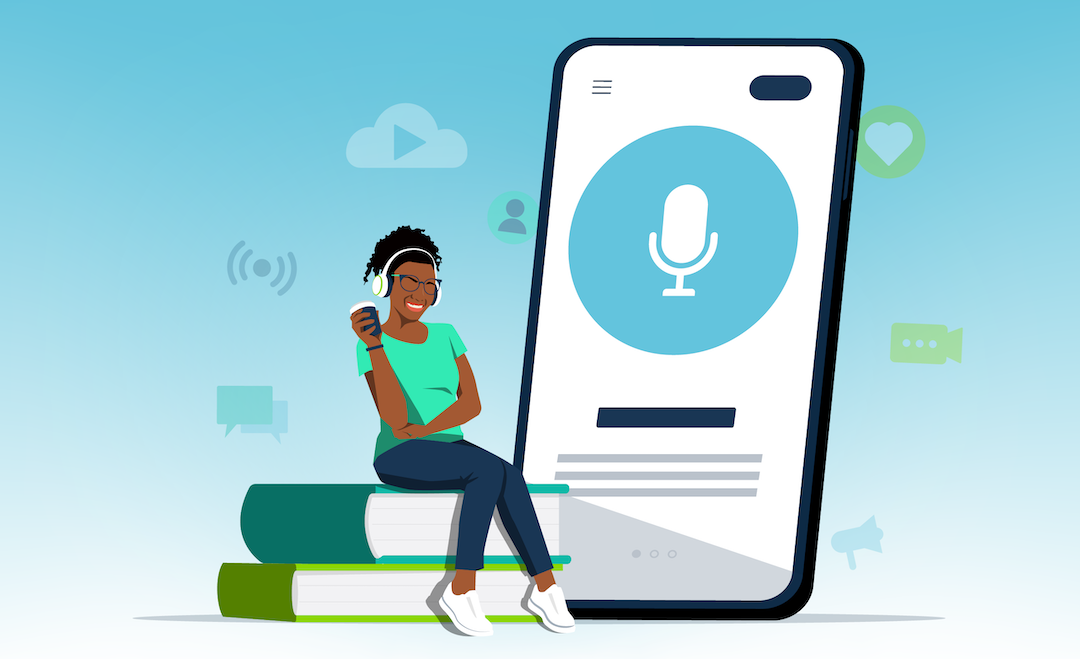 As a learning and development (L&D) professional, you have a profound impact on your organisation. You’re responsible for building a successful structured workplace learning initiative that helps your learners to achieve their goals. No pressure!
As a learning and development (L&D) professional, you have a profound impact on your organisation. You’re responsible for building a successful structured workplace learning initiative that helps your learners to achieve their goals. No pressure!
To do this, there are a number of challenges you need to overcome. According to Training Industry, L&D budgets are set to increase by 5.4% in 2023. Whilst that’s a positive development, don’t break the champagne out just yet.
The 2023 State of Learning and Development report notes that 57% of L&D professionals still find budget limitations to be their biggest challenge. As ever, you are being tasked with doing more with less.
There’s another problem too. Only 8% of CEOs say they see business impact from their organisational L&D programmes. And only 4% see a clear ROI. If you can’t showcase value, your budget will be at risk. Prove it or lose it.
But don’t fret. The cavalry is here. We’ve channelled 20+ years of experience into a brand new video series, The L&D Playbook. These 12 episodes cover every aspect of creating a world-class structured workplace learning initiative.
From creating learner personas, to boosting learner engagement and creating awesome training content, we’ll cover it all. We’ll also share additional context and supporting links. Ready to dive in? Then let’s get started…
The Goal of Structured Workplace Learning
Before we embark on this journey, it’s important to start with the goal in mind. The ultimate goal of any L&D training is to change behaviour in the workplace.
After all, driving awareness isn’t enough. Awareness does not always lead to activity. To truly move the dial, you need to change learner behaviour.
This is a lofty goal. It requires disrupting an existing habit and replacing it with a new and unfamiliar one. Leaving our comfort zones requires sustained motivation and support.
That’s the job of your structured workplace learning initiative. You’re there to encourage and guide your learners throughout their journey. This is your opportunity to create a continuous learning culture throughout your organisation.
If you can achieve that, then behaviour change is sure to follow.
Your Guide to Structured Workplace Learning
Whilst each structured workplace learning initiative will look different, there are certain steps that we’d recommend for all approaches. To help light the way, we’ve outlined a 12-step journey that you can follow.
So, let’s start at the beginning, with the learner persona creation process.

1. Understand Your Audience
Effective learning experiences rely on effective audience analysis. You can’t engage your learners if you don’t know what makes them tick. And you can’t improve learning outcomes if you don’t know what your learners’ needs and preferences are.
Without this information, you’re flying blind. You may be swinging your stick in the general direction of the piñata, but it will always remain tantalisingly out of reach. Learner personas help to close this gap and drive effective change.
Learner personas are fictional profiles of learners within your audience that are based on research and data. They help to make your learning interventions more targeted, meaningful, effective and engaging. Hit play on the video below to find out more.
![]()
2. Create Learner Personas
Now that you know what a learner persona is (and why they’re useful), it’s time to flex your creative muscles. Building a learner persona requires in-depth research. The better your data, the better your output will be.
In order to understand your audience, you’ll need to conduct surveys, interviews and observations. During this time, you’ll be attempting to capture your audience’s demographic information and key characteristics.
But you’ll also need to go beyond this. You’ll need to dig into psychometric data to discover your learners’ motivations, goals, challenges and learning preferences. Then it’s time to get analytical. Press play on the video below to find out more.
![]()
3. Apply Your Learner Personas
Now that you’ve done the hard work, don’t let your learner personas gather dust! It’s important they are put to good use. Understanding your audience is one thing. Using that information to change learning outcomes is another.
First up, you’ll need to consider which of your personas are the easiest to target and which will create the biggest impact. Then it’s time to assess your instructional strategy based on your persona’s needs, goals and preferences.
We recommend breaking your strategy down into four sections: content, pathways, gamification and social. You can then tailor each element to improve engagement and drive better outcomes. Check out the video below to find out more.
➼ Still curious? Learn more about learner personas here.
![]()
4. Create a Learner Engagement Strategy
Engagement is the level of involvement, attention and interest that your audience has towards your learning environment and your training material. The more engaged they are, the more likely they are to learn, understand and apply their new knowledge.
Similarly, it’s impossible to drive true behaviour change without an engaged audience. Your learners will never begin their journey if you don’t fire the starting pistol. Thankfully, there’s plenty you can do to trigger activity and incentivize learning.
Ready to hit the engagement motherlode? In this video, we’ll provide you with an overview of gamification, social learning and epic meaning. We’ll then conduct a deeper dive into these topics later in this playbook.
➼ We’re learner engagement experts. Get 150 more tips here.
![]()
5. Gamify Your Training
Gamification is one of the most powerful engagement tools in your arsenal. It’s an approach that borrows the mechanics that work so well in gaming environments and applies them to new contexts. Contexts like the world of learning and development.
Most learning systems will provide you with Badges, Experience Points and Leaderboards. Some will let you go further by introducing Levels, Streaks, Scorecards and even player-vs-player Battles. Imagine how these mechanics could be used to spur your learners into action.
When gamification is done right, it can trigger the release of happy hormones like dopamine, serotonin and endorphins. These chemicals help to give learning an addictive quality. Hit play on the video below to find out more.
➼ Game to train? Learn more about gamification here and here.
![]()
6. Leverage Social Learning
Whether you’re an introvert, extrovert or something in between, we’re all social animals. We’ve been using social learning for thousands of years to create, build and teach. In fact, it’s a remarkably effective (and engaging) training approach.
Social learning theory is the brainchild of Canadian-American psychologist, Albert Bandura. Nowadays, it’s a learning process that takes place regularly, often without us realising.
It’s the active process of learning by observing and interacting with others. It’s an informal activity, but it still has an important role to play within a structured workplace learning initiative.
In fact, according to the 70:20:10 model, social learning makes up 20% of everything we learn. That’s a big slice of the overall learning pie. It’s also the least lonely form of learning. Check out our video on social learning to ensure you don’t miss out.
➼ Let’s get together. Learn more about social learning here.
![]()
7. Find Your Epic Meaning
Purpose is a powerful thing. It guides life decisions, influences behaviour, shapes goals and helps to give our existence meaning. If it’s harnessed in the right way, it can be used to fire up and motivate your learning audience.
But there are no shortcuts. To generate Epic Meaning (a burning intrinsic sense of purpose), you’ll have to put in the work. You’ll need to present a vision, values, a pathway and a clear benefit statement. Your learners will want to know WIIFM (‘what’s in it for me?’).
We all yearn to be part of something bigger than just ourselves. We’re natural strivers. Tapping into this higher sense of purpose can create incredible results. Find out more by watching the video below.
➼ Find your purpose. Learn more about epic meaning here.
![]()
8. Create Effective Learning Experiences
Instructional design is part art form and part science. As you can imagine, this makes it difficult to master. Instructional designers focus on creating effective learning experiences by utilising the best possible materials, methods and technologies.
As such, instructional design is central to the success of your structured workplace learning initiative. Unfortunately, it’s also easy to get lost in all the different models and approaches. You’ll need to get to grips with ADDIE, Bloom’s Taxonomy, Gagne’s Nine Events of Instruction and many others.
Not sure where to start? This video will walk you through the key principles of instructional design. This will give you the framework you need to begin your journey, improve your processes and create better training experiences.
➼ Design better outcomes. Learn more about instructional design here.
![]()
9. Climb Bloom’s Taxonomy
You know a learning model is good if it stands the test of time. Bloom’s Taxonomy was created back in 1956, but it’s still utilised by learning professionals to this day. Now that’s staying power. It was revised in 2001, but the gist remains the same.
Bloom’s Taxonomy is a pedagogical approach that helps you to measure the cognitive development of your learners. It classifies six levels of cognitive functioning (in a hierarchical structure): remember, understand, apply, analyse, evaluate and create.
By understanding and appreciating the distinction between these different cognitive levels it becomes much easier to set effective learning objectives. Why not see for yourself by hitting play on the video below.
➼ Build meaningful objectives. Learn more about Bloom’s Taxonomy.
![]()
10. Organise Your Training Content
Your learners spend their every waking moment getting bombarded with adverts, media and content. It’s easy to get overwhelmed. If you take a ‘spray and pray’ approach with your training content, you risk simply adding to the sense of cognitive overload.
If you were lost in a dark forest, would you rather have a map or a machete? Your learners need structure. You should strive to communicate information clearly and in a logical order. This will help to engage your audience and improve retention.
This can be a challenging process. You’ll need to consider the difficulty level of your content, the relevance, the length, the order and many other factors. To get the full breakdown, press play on the video below.
➼ Level up your learning. Learn more about pathways.
![]()
11. Tell a Story
The best stories wedge themselves in our mind and stay with us throughout our lives. Why? Because they provoke an emotional response. This makes them considerably more memorable than the info-dumps you typically get in textbooks and fact sheets.
Imagine if your training content had the same level of emotional resonance. Well, by embracing the power of narrative, it can. Whether you use a character-driven story, a real-life scenario or an outrageous plot, you’ll help to engage and delight your learners.
Challenge yourself to get creative, use descriptive language and create tension throughout your training content. You’ll be amazed at the results. Watch the video below to start fueling your imagination.
➼ Your story starts here. Learn more about narrative-driven learning.
![]()
12. Embrace Video-based Learning
Video is a powerful learning tool as it combines movement, sound and text into a dense information-rich package. This enables you to deliver key training messages at a record speed. After all, our brains are designed to process visuals much faster than text.
Whilst the written word still has a role to play, there’s a reason why we packed this article full of high-impact video content. Videos hold our attention in a vice grip, improve engagement and tend to be more memorable.
They are also a perfect fit if you’re attempting to deliver narrative-driven learning experiences as part of your structured workplace learning initiative. What’s more, they don’t have to break the bank. Intrigued? Then check out the video below.
➼ Lights, camera, action. Learn more about video-based training.
![]()
BONUS: Evaluate Your Training
Once you’ve delivered an awesome structured workplace learning programme, you’ll need to evaluate the results. You know, just to check it’s as awesome as you thought it was! To do this, we recommend following Donald Kirkpatrick’s guidance.
Kirkpatrick’s model of learning evaluation consists of four distinct levels: Reaction, Learning, Behaviour and Results. It’s relatively easy to assess your success in the first two levels. But understanding how you’ve changed behaviour and impacted your business? That’s a different kettle of fish.
You’ll need patience, good data and an analytical mind. As a reward, you’ll extract useful information that empowers you to improve your future training interventions. Check out our video below to find out more.
➼ Excellence in evaluation. Learn more about training ROI.
![]()
Final Words: Structured Workplace Learning Demystified
There you have it. A 12-step guide designed to bolster your learning strategy.
Start by understanding your audience, mapping their needs and creating an engagement plan. Then refine your content, apply game mechanics and introduce social learning opportunities. Next, organise your content into pathways and add a narrative.
If you follow these steps, then your structured workplace learning initiative will be primed for success. It will drive three powerful outputs: learner engagement, behaviour change and business impact.
Then it’s up to you to ensure your key stakeholders are informed about the value your team is creating. Good luck!
Still hungry for more? We’ve got you covered. Download ‘The L&D Professional’s Handbook’ now. It’s locked and loaded with 165 tips designed to help you improve your organisation’s learning outcomes.








